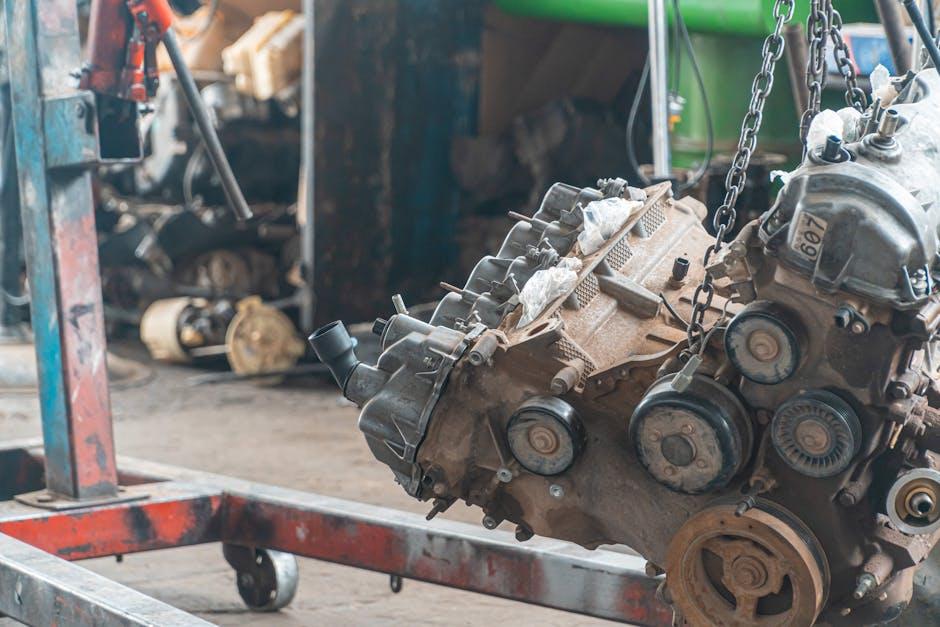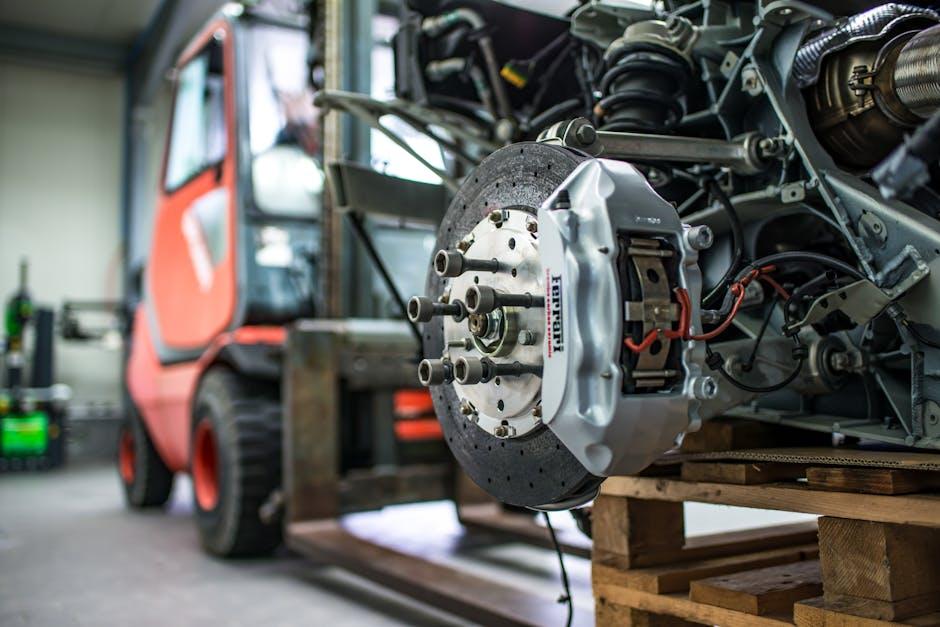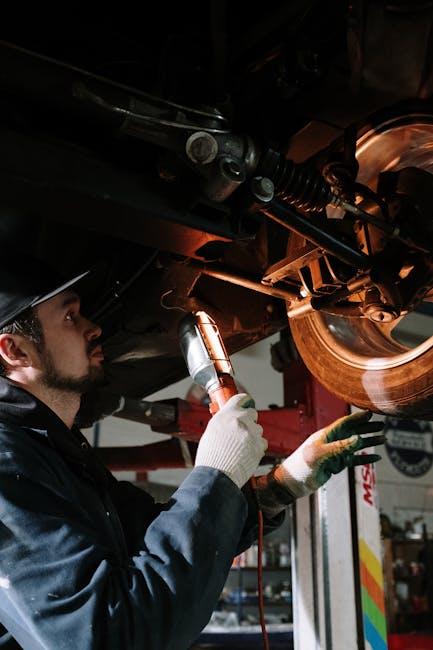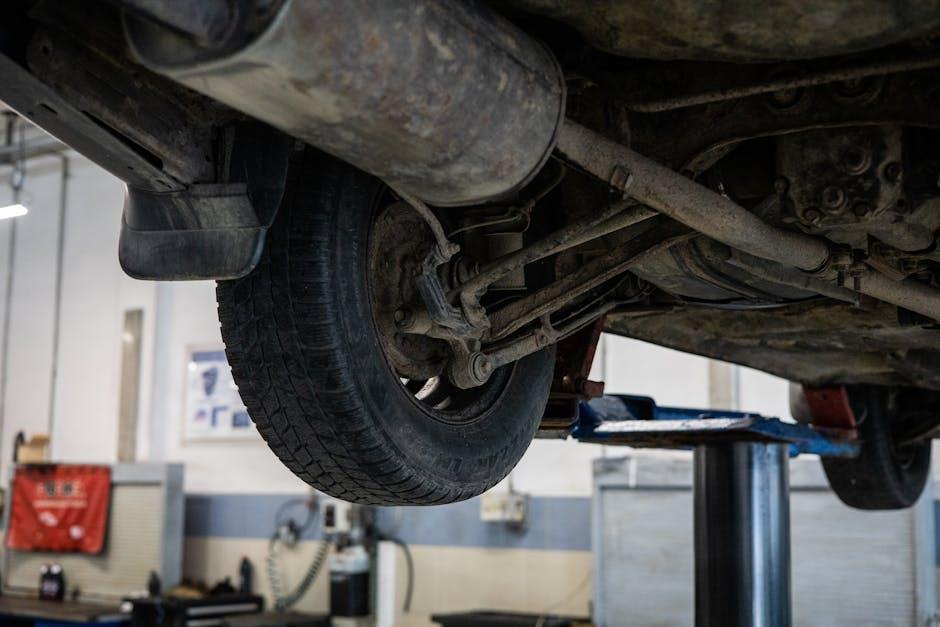When your car begins to feel a little off—whether it’s pulling to one side, producing strange noises, or delivering an unusually bumpy ride—the culprit often lies within the suspension or steering systems. These two vital components work in harmony to ensure a smooth, controlled driving experience, yet their problems can sometimes blur together, making diagnosis tricky. In this article, we’ll delve into the subtle and not-so-subtle differences between suspension and steering issues, helping you pinpoint the source of your vehicle’s troubles and understand what it takes to set things right on the road.
Table of Contents
- Common Signs That Distinguish Suspension Problems from Steering Malfunctions
- How Suspension and Steering Systems Interact to Affect Vehicle Handling
- Diagnosing the Root Cause of Uneven Tire Wear and Vibration Issues
- The Impact of Suspension and Steering Faults on Vehicle Safety and Control
- Maintenance Tips to Prevent Suspension and Steering Failures
- When to Seek Professional Repair: Prioritizing Suspension and Steering Care
- Q&A
- Insights and Conclusions

Common Signs That Distinguish Suspension Problems from Steering Malfunctions
When diagnosing issues that affect your vehicle’s performance, it’s crucial to identify whether the symptoms stem from suspension troubles or steering malfunctions. Suspension problems frequently manifest as uneven tire wear, excessive bouncing after traversing bumps, or a noticeable sag on one side of the vehicle. These signs indicate that components like shocks, struts, or springs may be compromised, impacting ride comfort and stability. You might also feel the car drifting or pulling to one side, but unlike steering issues, this is often accompanied by a rough or unstable ride.
In contrast, steering malfunctions typically present as difficulty turning the wheel, unusual noises when steering (such as clunks or squeaks), or a loose, unresponsive steering feel. A telltale sign is when the vehicle does not return to center smoothly after a turn. Below is a quick reference table highlighting key symptoms:
| Symptom | Suspension Problem | Steering Malfunction |
|---|---|---|
| Uneven tire wear | Common | Rare |
| Difficulty steering | No | Yes |
| Noise when moving over bumps | Yes | No |
| Loose steering wheel feel | No | Yes |

How Suspension and Steering Systems Interact to Affect Vehicle Handling
When examining the dynamics of vehicle handling, it’s essential to recognize that suspension and steering systems work in tandem to provide stability, control, and comfort. The suspension absorbs shocks and maintains tire contact with the road, while the steering system translates driver input into directional changes. A malfunction or imbalance in one system inevitably influences the other, resulting in compromised handling. For example, worn suspension components can cause the steering to feel loose or unresponsive, leading to delayed steering feedback and reduced driver confidence.
Several factors illustrate this delicate interplay, including:
- Steering Response: Uneven or excessive suspension wear can cause a vehicle to pull or wander, forcing the steering to correct more frequently.
- Cornering Stability: Proper alignment through the suspension ensures that steering efforts result in predictable and stable turns.
- Vibration and Feedback: Suspension defects can transmit unwanted vibration to the steering wheel, obscuring driver perception of road conditions.
| Issue | Suspension Effect | Steering Experience |
|---|---|---|
| Worn Shock Absorbers | Reduced dampening | Loose, floating steering feel |
| Misaligned Suspension | Tire wear; uneven handling | Pulling to one side |
| Damaged Tie Rods | Minimal suspension change | Steering play or shaking |

Diagnosing the Root Cause of Uneven Tire Wear and Vibration Issues
Uneven tire wear and vibration often point towards underlying mechanical issues, but distinguishing whether the root cause lies in the suspension or steering system can be tricky. The suspension bears the brunt of road impact, managing components like shocks, struts, and bushings. When these parts wear out, the tires might exhibit cupping, feathering, or patchy wear patterns. Likewise, vibrations felt at certain speeds or during braking often stem from suspension imbalance, misaligned components, or deteriorated mounts. Common suspension-related symptoms include:
- Uneven tire tread wear with rough, sporadic patches
- Harsh, bumpy rides on smooth surfaces
- Vehicle pull or sway during turns
- Excessive bounce after hitting a bump
On the other hand, steering issues impact vehicle control and handling precision, often leading to a different wear signature on tires, such as more uniform wear on one side. Steering component problems—rack and pinion wear, tie rod damage, or looseness—can manifest as vibrations particularly in the steering wheel, wandering behavior, or difficulty maintaining a straight path. Understanding the nuances is now simpler with this quick reference:
| Symptom | Suspension Cause | Steering Cause |
|---|---|---|
| Vibration at Speed | Worn shocks or struts | Loose tie rods |
| Tire Wear Pattern | Cupping/feathering | One-sided uniform wear |
| Pulling/ Wandering | Broken control arm bushings | Rack and pinion play |
| Steering Wheel Play | Rarely significant | Common sign |

The Impact of Suspension and Steering Faults on Vehicle Safety and Control
When suspension or steering malfunctions arise, the immediate effect is a noticeable decline in vehicle stability and handling. Faulty suspension components can lead to uneven tire wear, increased vibration, and a harsher ride, undermining the contact between tires and the road surface. This disconnect compromises braking efficiency and can cause unpredictable vehicle behavior during turns or on uneven terrain. Simultaneously, steering faults — such as misalignment, worn tie rods, or malfunctioning power steering systems — directly translate to reduced control, making it difficult for drivers to maintain their intended path, especially at higher speeds or during sudden maneuvers.
Understanding the specific ways these faults affect safety helps prioritize repairs and routine maintenance. Consider the following key impacts on vehicle control:
- Suspension Issues: Reduced shock absorption, increased tire blowout risk, and compromised load distribution.
- Steering Problems: Delayed response, increased steering effort, and potential loss of directional accuracy.
| Fault Type | Primary Safety Concern | Typical Symptoms |
|---|---|---|
| Suspension | Loss of vehicle stability | Uneven tire wear, rough ride |
| Steering | Imprecise directional control | Steering wheel play, difficult turning |

Maintenance Tips to Prevent Suspension and Steering Failures
Proper upkeep is essential to ensure your vehicle’s suspension and steering systems operate smoothly and safely. Regularly inspect components like ball joints, tie rods, and shock absorbers for any signs of wear or damage. Grease and lubricate moving parts according to your vehicle manufacturer’s recommendations to minimize friction and prevent premature wear. Additionally, pay close attention to tire condition and alignment; uneven wear patterns often signal suspension or steering issues, which, if addressed early, can save you costly repairs down the road.
Incorporate the following routine checks to maintain optimal performance:
- Visual inspections: Look for cracks, leaks, or rust on suspension parts.
- Tire pressure and alignment: Keep tires inflated properly and aligned to reduce stress on steering components.
- Steering responsiveness: Monitor any unusual looseness or stiffness when turning the wheel.
- Suspension bounce test: Push down on each corner of the vehicle; rebound should be quick and firm, not sluggish.
| Maintenance Task | Frequency | Benefit |
|---|---|---|
| Visual Inspection | Monthly | Early Problem Detection |
| Tire Alignment | Every 10,000 miles | Even Tire Wear & Stability |
| Lubrication | Every 20,000 miles | Reduced Friction & Longer Parts Life |
| Suspension Bounce Test | Quarterly | Suspension Integrity Check |

When to Seek Professional Repair: Prioritizing Suspension and Steering Care
Recognizing when your vehicle needs expert intervention is crucial for maintaining safety and comfort. If you notice persistent vibrations, uneven tire wear, or a steering wheel that feels loose or unresponsive, these are clear signals that your suspension or steering system demands professional attention. Delaying repairs in these scenarios can not only worsen the problem but also lead to higher costs and increased risk on the road. Trusting a skilled technician ensures that the intricate components like ball joints, tie rods, and shocks are inspected and serviced with precision.
Some symptoms that should never be ignored include:
- Uneven or rapid tire wear indicating alignment or suspension faults
- Pulling to one side while driving, a sign of steering or suspension imbalance
- Unusual noises such as clunks or squeaks while hitting bumps
- Excessive bouncing or swaying after going over a bump
| Symptom | Likely System | Repair Priority |
|---|---|---|
| Steering wheel vibration | Suspension | High |
| Difficulty turning | Steering | Urgent |
| Uneven tire wear | Suspension/Steering | Medium |
Q&A
Q&A: Suspension vs Steering Issues
Q1: What is the primary difference between suspension and steering systems in a vehicle?
A: The suspension system mainly supports the vehicle’s weight, absorbs shocks from the road, and ensures a smooth ride by controlling tire contact with the road. The steering system, on the other hand, allows the driver to control the direction of the vehicle by turning the wheels.
Q2: How can I tell if a problem is related to my suspension and not my steering?
A: Suspension issues often manifest as a bouncy or uncomfortable ride, uneven tire wear, or noises like clunking when going over bumps. Steering problems tend to show up as difficulty turning the wheel, excessive play or looseness in the steering wheel, or the vehicle pulling to one side while driving.
Q3: Can suspension problems affect steering performance?
A: Yes, since suspension components help maintain proper wheel alignment and contact with the road, worn or damaged suspension parts can cause steering to feel loose, imprecise, or cause the vehicle to wander.
Q4: What are common signs of steering issues I should watch out for?
A: Look for hesitation in steering response, excessive effort needed to turn the wheel, unusual noises when steering, vibrations felt through the steering wheel, or a steering wheel that doesn’t return to center after a turn.
Q5: Are suspension and steering repairs expensive?
A: Costs vary widely depending on the vehicle and issue severity. Suspension repairs can range from replacing shocks or struts to more involved work like control arms or bushings. Steering repairs might involve replacing a steering rack, power steering pump, or tie rods. Regular maintenance and early detection help reduce costly repairs.
Q6: How can I maintain my suspension and steering systems to avoid problems?
A: Regularly inspect tires for even wear, keep your wheels properly aligned, avoid potholes and rough roads when possible, check suspension components for wear or damage, and ensure the steering fluid is topped up and clean if your vehicle uses hydraulic power steering.
Q7: When should I see a professional mechanic regarding suspension or steering concerns?
A: If you notice unusual noises, poor handling, pulling in one direction, uneven tire wear, or steering difficulties, it’s wise to have a professional diagnose the issue promptly. Safety depends heavily on these systems working correctly.
Q8: Can suspension or steering problems impact vehicle safety?
A: Absolutely. Faulty suspension can reduce braking efficiency and vehicle stability, while steering issues can lead to loss of directional control. Both require immediate attention to keep you and others safe on the road.
Insights and Conclusions
In the intricate dance of driving, both suspension and steering systems play starring roles—each ensuring control, comfort, and safety on the road. While their troubles might manifest in similar ways, understanding the distinct causes and solutions behind suspension versus steering issues empowers every driver to respond wisely. Whether it’s a subtle tremor or a pronounced pull, recognizing the difference not only preserves your vehicle’s health but also keeps your journey smooth and secure. After all, mastering the art of diagnosing these hidden faults is key to steering confidently into the miles ahead.

